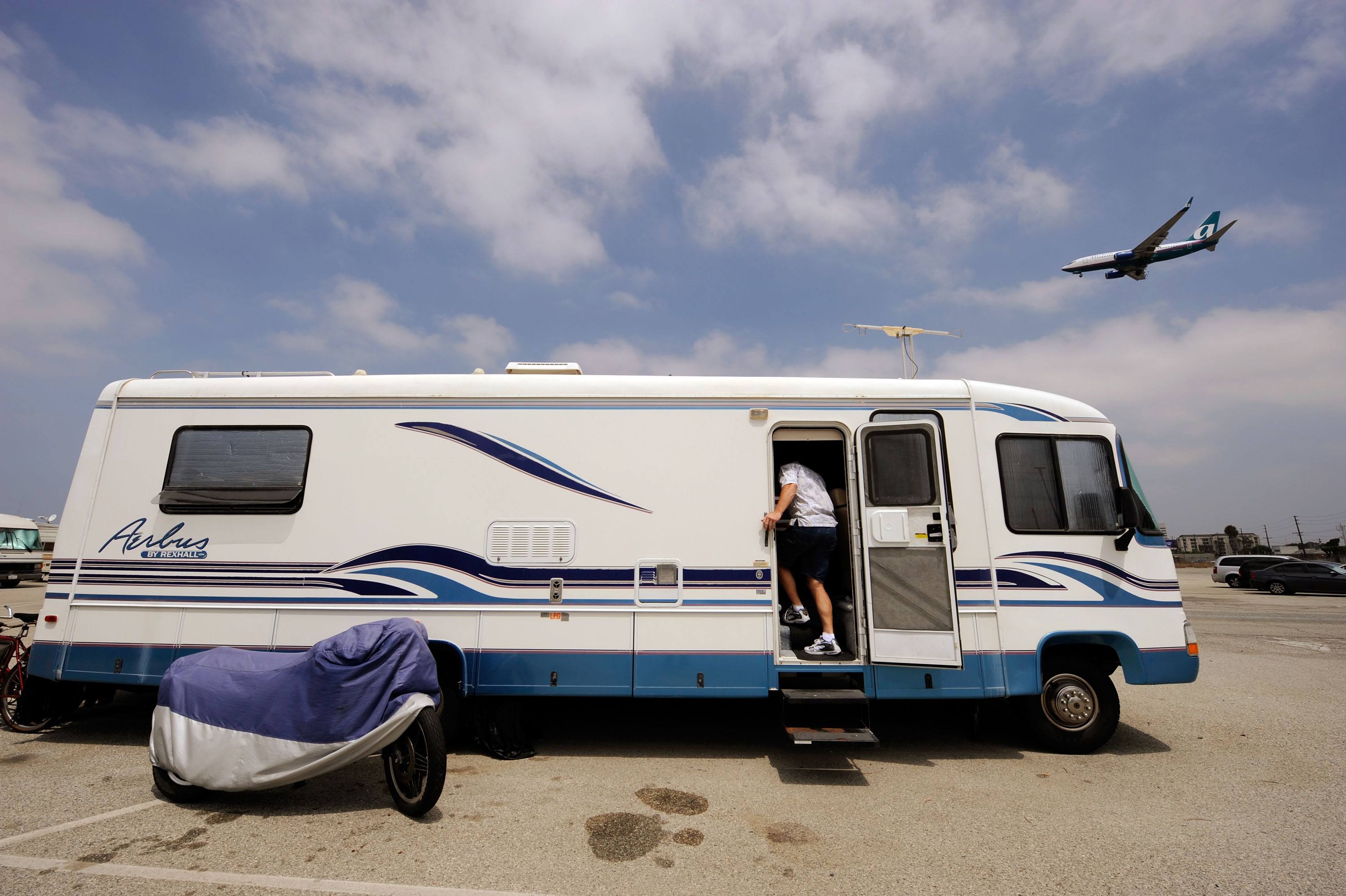15 Things You Should Never Buy When You're Broke
Even when it feels like you have no money, you still have to spend a little bit of money.
Being
broke sometimes extends for weeks, months, or years at a time.
Reasonably, you can’t be expected to spend that entire time holed up in
your house with the lights off eating nothing but ramen noodles and tap
water. However, if you ever hope to get out of debt, there are certain things you need to give up purchasing when your bank account has insufficient funds.
The
most important rule to follow? Be realistic about how much money you
have. Then follow these simple rules to cut unnecessary spending stop
buying the luxuries you don’t really need. The crazy thing is that you
may realize you don’t miss them much anyway.
1. Starbucks
Starbucks Frappuccino | dontree_m/ iStock/ Getty Images Plus
This one is a cliché for a reason. And no, you’re not off the hook if you only buy “cheap” coffee to go.
Whether you hit up Starbucks for daily $5 mocha lattes
or you’re only being a little indulgent by swinging through the Dunkin
Donuts drive-thru every morning for your caffeine fix, the fact remains:
it’s much cheaper to make coffee at home and take it with you than it
is to order it every morning. If you’re broke, cutting back on this
pricey habit could translate to significant savings over the course of a
year.
Next: Admit it — You never use this anyway.
2. Gym memberships
Gym | Nd3000/iStock/Getty Images
You
know that gym membership you signed up for, swearing you’d go at least
three times per week? It’s time to stop pretending and stop paying for
something you never use. Even if you do visit the gym occasionally, it’s
not worth the cost if you can get a workout in for free.
Go for a walk, purchase a weight set to stash in your bedroom, and look up simple exercises
to accomplish at home. Unless you’re a serious athlete training for an
event, you probably don’t need professional equipment to stay in shape –
especially if you’re broke.
Next: It’s time to start making this at home.
3. Mixed drinks
Cocktails | IvanZivkovic/iStock/Getty Images
You
don’t have to become a teetotaler just because you’re going through a
rough patch with your finances – but wasting precious funds on drinks at
the bar is just silly. Unwind by staging a game night at home,
purchasing your liquor on sale, and inviting everyone to bring
appetizers to share. It’ll be less crowded than the bar and way less
pricey, too.
Next: Go natural and save money.
4. Expensive hair appointments
Hair cut | MilanMarkovic/iStock/Getty Images
No
need to let your hair grow into an unstylish mop just because you’re
broke, but spending several hundred dollars touching up your highlights
is unnecessary. Stick to regular trim appointments and consider letting
your hair return to its natural shade if you need to save some money.
Been going to a ritzy salon? Consider finding a cheaper stylist to work
magic on your strands. You can find real talent for cheap if you’re
willing to ask around.
Next: Save this for special occasions.
5. Going out to eat
Dining at a cafe | Rawpixel/iStock/Getty Images
Even
choosing a cheaper restaurant won’t help your situation if you’re broke
or in debt. Overpaying for meals plus tipping your waiter or waitress
will set you back significantly – and it’s usually not even worth it.
Instead, find a few quick, cheap recipes to keep in your arsenal and
save restaurant meals for special occasions.
Next: You can find these for free.
6. Books
Books | ConstantinosZ/iStock/Getty Images
The
new hardcover version probably costs upwards of $20 and the paperback
or Kindle version isn’t much cheaper. Plus, how often have you ever read
a book more than once? Rather than spending money on books, sign up for
a library card and borrow them instead. It’s free.
Next: There’s a new way to enjoy this thing.
7. Vacations
Vacation | DisobeyArt/Getty Images
It
doesn’t matter how good of a deal you find on that discount vacation
website – going on a trip is bound to cost more money than you expect.
Between transportation costs, dining, lodging, and activities, the
expenses add up quickly.
But
just because you’re broke it doesn’t mean you have to forgo your paid
vacation time at work. Consider planning a “staycation” where you stay
at home and finally tackle those projects you’ve been putting off. You
can also explore the cheap or free activities right in your hometown.
Next: Don’t ever pay for these.
8. Workout classes
Yoga | Matt Cardy/Getty Images)
Like
gym memberships, drop in workout classes only seem cheap. But when
you’re paying $10 every time you indulge in yoga, those expenses start
to become significant. Rather than paying to take classes, check out
free community workouts or search YouTube for free online tutorials.
Borrowing a workout DVD from a friend or the library is another great
way to get in shape without spending a ton.
Next: People wish you’d spend less on this item.
9. Expensive gifts
Gift | Angel_a/iStock/Getty Images
Of
course you love your friends and family, but if you’re broke, then
dropping hundreds of dollars on birthday or holiday gifts isn’t wise.
Instead, try making something meaningful such as a photo collage or even
a homemade edible treat. The most treasured gifts come from the heart.
Next: Don’t be tricked into paying too much for this.
10. Full-priced anything
Shopping | ViktorCap/iStock/Getty Images
Newsflash:
Just about everything goes on sale eventually. Resist the urge to
purchase any items in the store that were just put out and only hunt for
sale and clearance finds.
Be wary, however – you shouldn’t buy something just because it’s a good
bargain. Make sure you need it before you add it to your cart.
Next: Never pay too much for this necessity.
11. New clothing
Clothing rack | Sigefride/iStock/Getty Images
Thrift
stores aren’t what they used to be. Now upscale secondhand stores sell
in-season, stylish merchandise that’s just as good as new but for a
fraction of what you’d pay in regular store. Some items still have tags
on them! Talk to your friends to figure out the best thrift store near
you or check out online secondhand stores like thredUP.
Next: Too many people spend too much on this.
12. Gas
Gas | joeshmo/iStock/Getty Images
No
matter where you live in the country, gas is expensive. Consider
walking or riding your bike if you can (bonus: free exercise) when you
have someplace to go. If you must drive, consolidate your errands into
one trip so you’re not constantly using the car when you don’t need to.
Next: Don’t believe this common purchase is cheap – it’s not.
13. Fast food
Drive thru | Justin Sullivan/Getty Images
It may be fast and convenient, but fast food
is anything but cheap. You can spend a lot less cooking at home even if
you spend a little more on easy meals from the grocery store. Skip the
drive-thru and cook at home – it will always save you money.
Next: You don’t need to spend money on this at all.
14. Juice
Juice | Breaking The Walls/ iStock/Getty Images Plus
No
one needs to drink juice. Water is free (forget bottled water) and it
doesn’t have any calories. Skip buying juice and soda or if you must,
water it down generously to make it last longer. A bottle of
concentrated flavor drops can make your water more interesting but
doesn’t cost a lot.
Next: Save your money and get this for free.
15. Anything you can borrow
Culled from Wallstreetcheatsheet









































